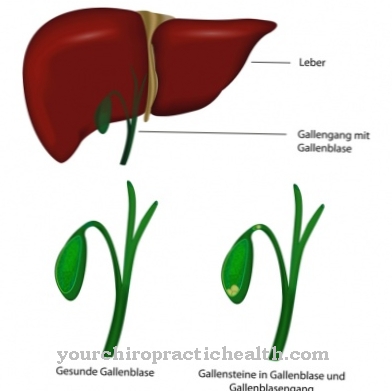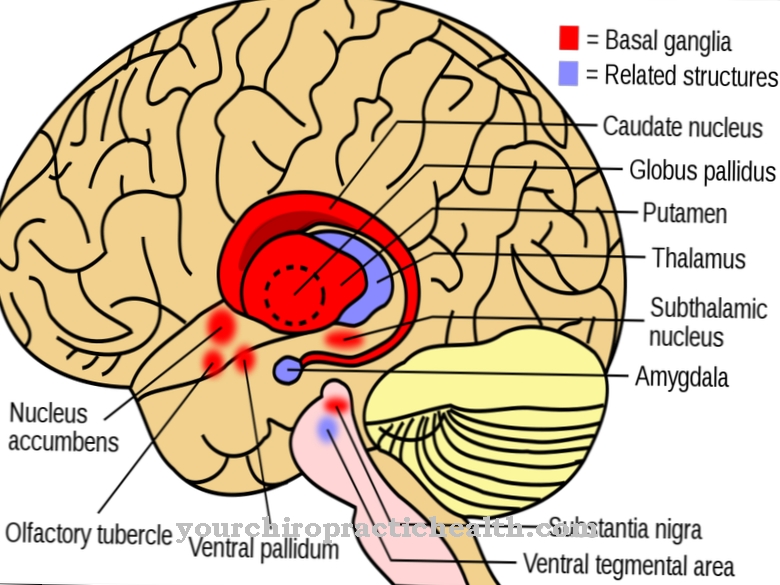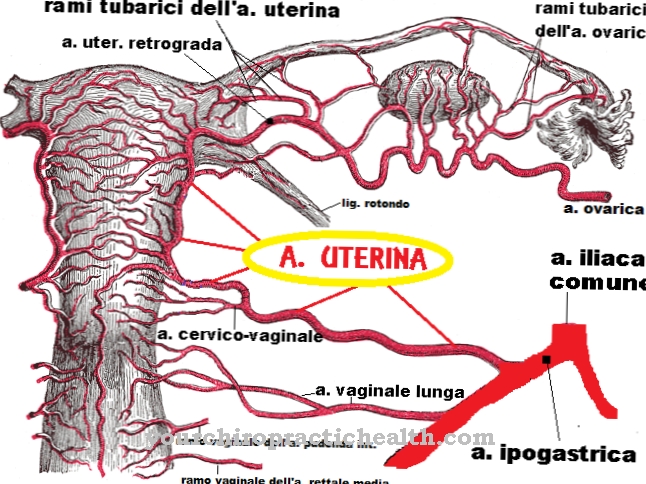The chin is different in humans, can be small or large, dimple, or protruding or recessed. Although it does not form the center of the face, it does determine the entire face profile, which in turn influences the harmony of the face. The chin therefore contributes a lot to whether a person is perceived as beautiful.
What is the chin
From an anatomical point of view, the chin represents the lower front or the lower end of the human face. The anatomical name is "Regio mentalis".
The chin is connected to the lower jaw and is supported by the lateral cusps of the lower jaw on both sides and by the protuberantia mentalis. A fat pad and the jaw muscle, also known as the "mental muscle", lie above it. On the side there is the puller of the lower lip and on top the oral sphincter, which determines the facial expressions, which in turn is possible through the branch of the facial nerve. The chin lymph nodes are located below the chin. The visible areas are called the jaws.
Anatomy & structure
Interestingly enough, humans alone have a chin. Not even his closest ancestors, the Neanderthals, had this strange body part. One theory for the occurrence of the chin in humans is that it absorbs forces caused by the human skull when chewing.
However, other research has shown that the stress on the jawbone does not lead to pronounced growth of the chin. Rather, the chin is probably a consequence of the entire human development process, which has also affected the lower part of the face. The chin is therefore more or less a coincidence and formed in the course of evolution because the entire face became smaller and smaller over time. Compared to the Neanderthals, the human face has shrunk by almost 15 percent.
Function & tasks
Under normal conditions, bony protrusions, as is the case with the chin, are attachment points for muscles or serve to stabilize the skeleton. However, the purely mechanical function of the chin has not been confirmed by biomechanical measurements and research results. On the contrary, it was found that the larger the skull became, the more unstable it was. People who chew a lot and use the lower jaw more often have a smaller chin than others.
Rather, scientists now assume that the chin was formed because humans changed their way of life and thereby lost their aggressive animal characteristics. Similar observations could be made in changing a wild animal into a pet. The wild tendencies were lost over time.
Since humans had to form groups due to climatic changes and dangers from other animals in order to defend themselves and thus cooperate with one another, a social network of common coexistence has formed. The appearance has adapted through social life, the facial features have changed in this sense for the togetherness. The community created an increasingly peaceful look to get along with each other.
The adjustment to each other and the distribution of the hunt to many people took some of the previous burden off the people and brought about a hormonal change from the previously hard and wild features into soft and sociable ones. The peacefulness led to a drop in testosterone levels. Both the psyche and the anatomy experienced a renewal.
These conditions can also be observed today. A man will z. B. to the real guy and perceived by women as particularly attractive if he has a strong and pronounced chin. This assumes good fertility on a biological basis and awakens the protective instinct that women need.
The chin determines the profile with the nose and forehead. In general, the chin creates the aesthetic shape and expression of the face. This is perceived as particularly attractive or beautiful if the front view is narrow, tapers to a point and has a slight triangular shape. When viewed in profile, the face appears more harmonious when the chin is slightly curved outwards.
A so-called receding chin also appears rather unaesthetic. The medical name for this is “micro genius”. Such a chin looks set back and is therefore very disproportionate. It is usually poorly developed and causes the mouth and nose to appear far out. Especially in the profile view, a nose looks much larger than it is due to the receding chin and thus dominates the face. A receding chin can also lead to a double chin more quickly, especially if there is too much skin on the neck.
A receding chin can be present from birth, but it can also occur due to bone loss in the lower jaw over time and the aging process.
You can find your medication here
➔ Medicines against redness and eczemaDiseases
Operations or serious accidents can cause the chin to move, sit crooked or one-sided. The chin also changes due to one-sided muscle strain or a misalignment of the teeth, which in turn leads to bone changes and a decrease in subcutaneous fat.
The entire face then appears changed. The chin correction is therefore a frequently performed surgical procedure, it is used for a receding, but also a protruding chin or a double chin. A chin build-up is made possible by the body's own bones or by material that does not originate from the body, e.g. biocompatible implants.
When the chin is reduced, part of the bony chin base is removed. This is done through an osteotomy.



























